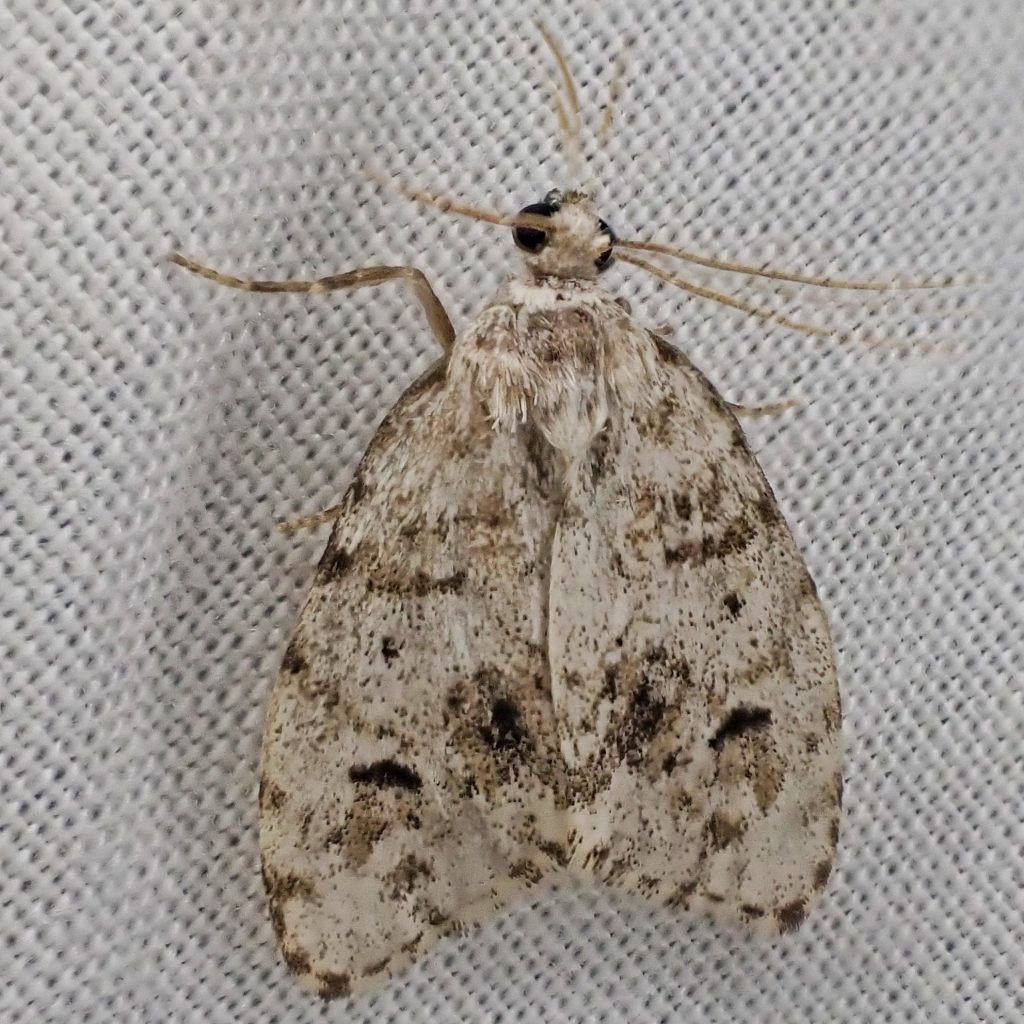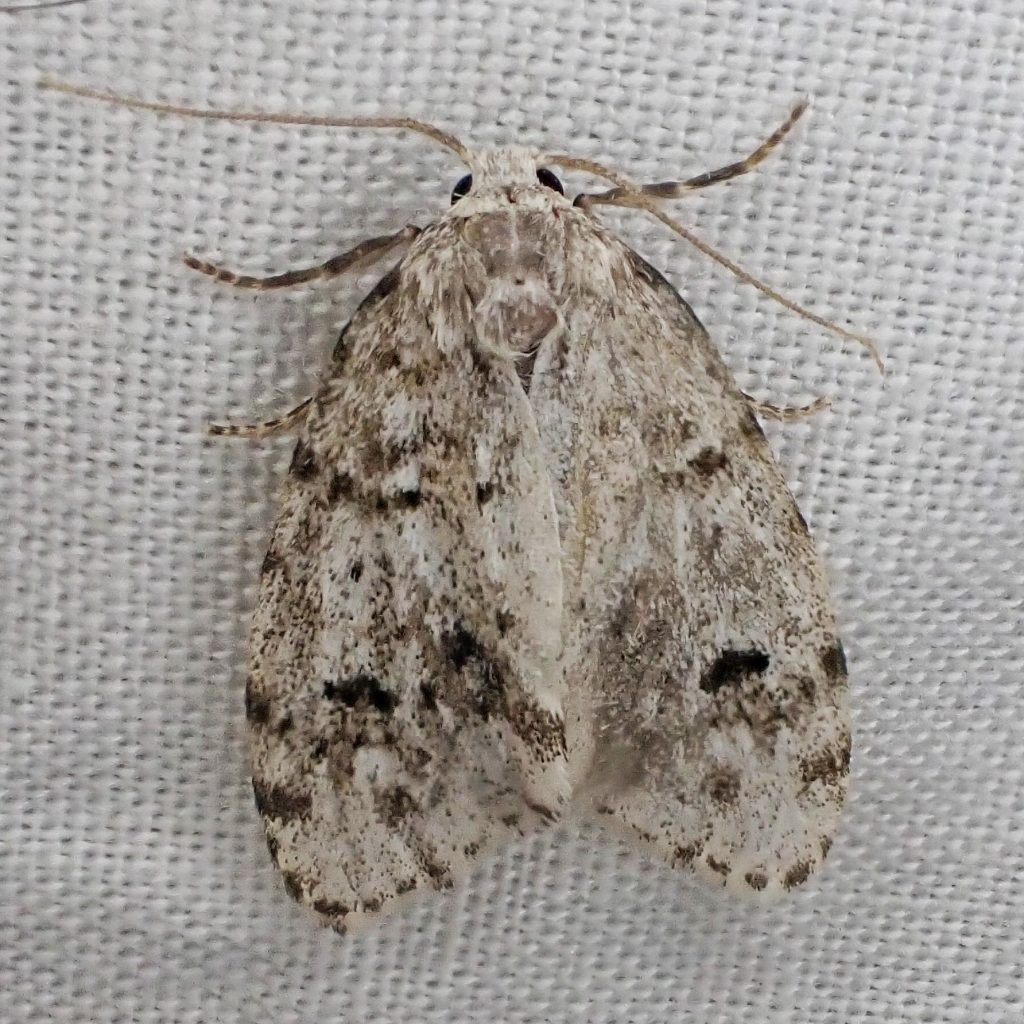
I’m always happy to get some of these little tiger moths (family Erebidae) visiting my lights. The only common name I found for them was little shaded lichen moth, and that was only at MPG, but it’s a good name for them because they are small, often shaded in patterning, and the larvae eat lichens. Plus I would think that, while they’re not exactly pretty, they would be fantastically well camouflaged against a background of any of the lighter colored lichens. And considering how nondescript they are, they are surprisingly easy to identify from some distance, because of those distinctive oval wings.
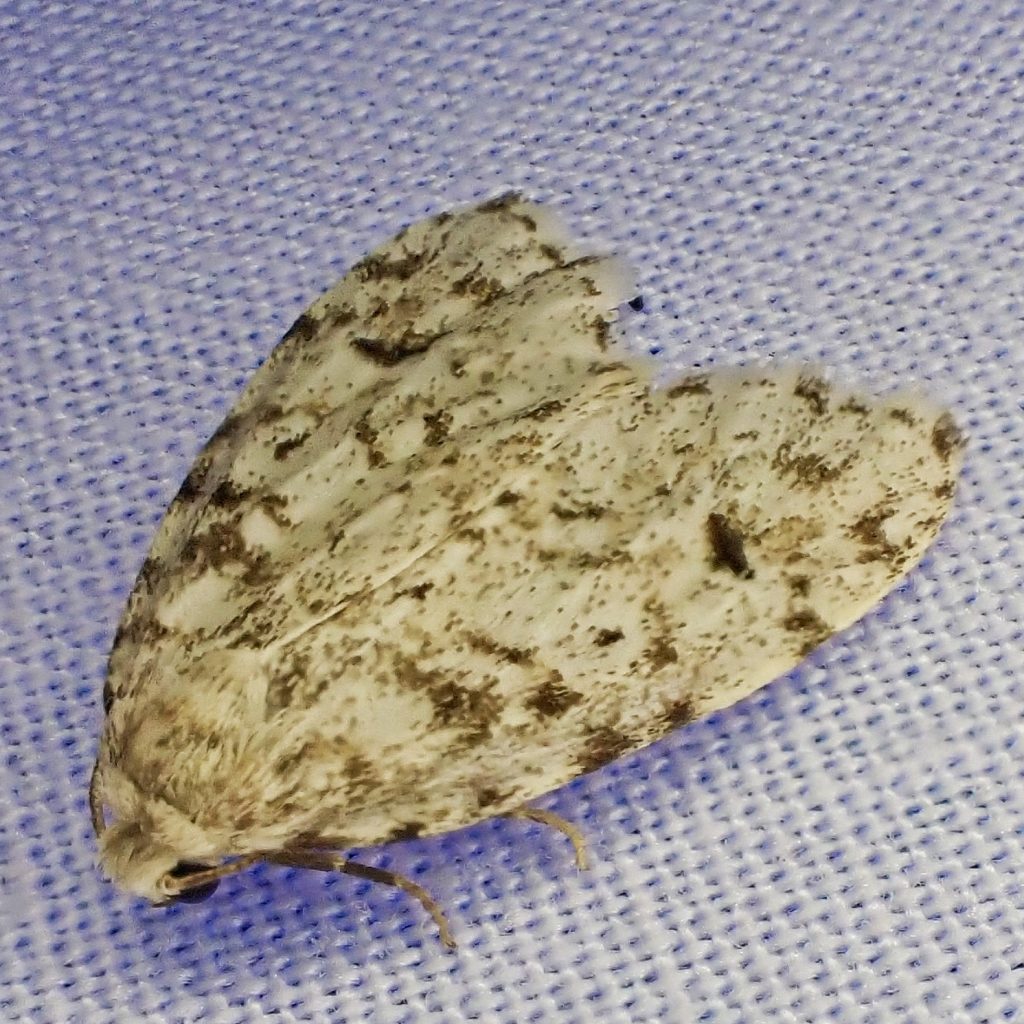
For many decades these moths were considered to be Clemensia albata, despite the fact that A. S. Packard, the original describer of C. albata, had placed the western populations in their own taxon, Clemensia umbrata, with his original description of them. But, using both morphological and DNA analysis, in 2018 Schmidt and Sullivan concluded, in their paper Three species in one: a revision of Clemensia albata Packard (Erebidae, Arctiinae, Lithosiini), that Clemensia umbrata was a valid species that actually can also be found in the east in the Appalachians, and that there was yet another species, Clemensia ochreata (found in the se US), hidden within this clade. Packard undoubtedly is resting easier now.
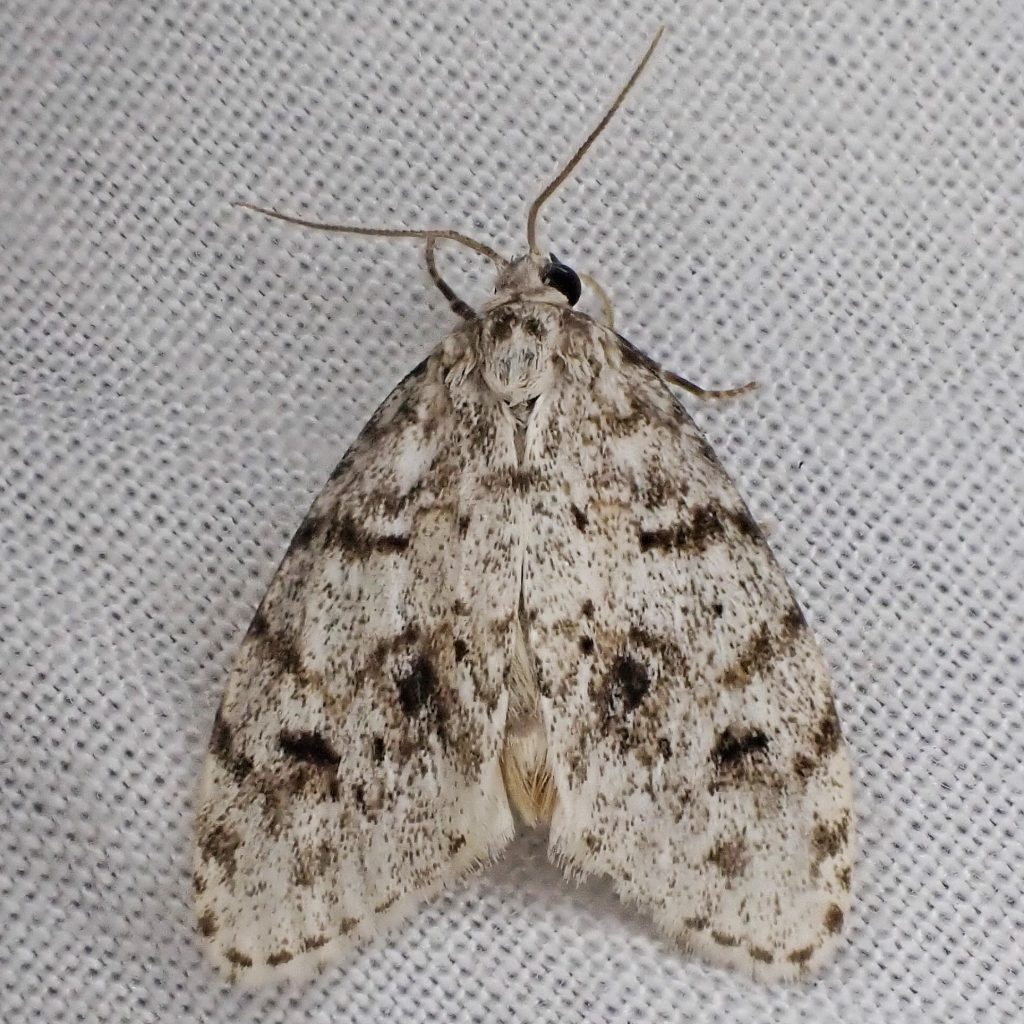
Description– “Clemensia umbrata is a small (FW length 10–11 mm), pale, oval-winged tiger mothfound in moist forests in our region. The forewing is pale white and smudgy brown-gray peppered with darker scales. The transverse lines are pale gray-brown marked with darker dots, these most evident as black dots on the costa, on the antemedial line in the cell, and on the postmedial line in the fold. The entire terminal line at the base of the fringe is dotted. The orbicular spot is a small black dot and the reniform spot is a thin black slightly irregular triangle. The hindwing is whitish extensively smudged with light gray.” PNW Moths | Clemensia umbrata
Similar species– “This species is most likely to be confused with micro moths (multiple families that are not included on this site) but can be recognized by wing shape and pattern. Meganola minuscula is similar in size and general pattern, but it has complete black transverse lines. It also occurs earlier in the spring before the flight of Clemensia umbrata.” PNW Moths | Clemensia umbrata
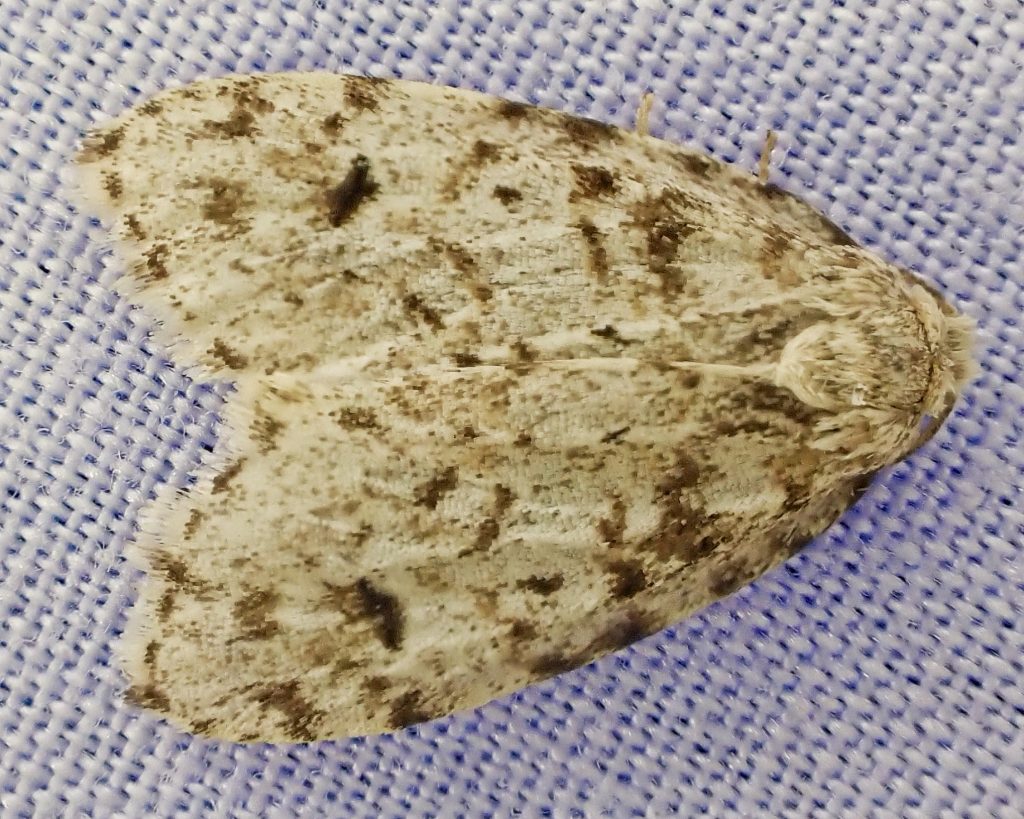
Habitat– “This species is widely distributed across North America in moist forests. In the Pacific Northwest, it is common to abundant in coastal rainforests, oak woodlands, and in mixed hardwood forests at low elevations west of the Cascades, but appears to be rare in the Rocky Mountain region.” PNW Moths | Clemensia umbrata
Range– “Clemensia umbrata is distributed across North America, predominantly near the Canada-United States border. In western North America it has a narrow distributionalong the Pacific Coast south to Monterey Bay in west-central California…This species is widespread in the Pacific Northwest and has been collected most frequently in southern British Columbia, northern Idaho, and the western parts of Oregon and Washington. The most northerly records are from Cedarvale in west-central British Columbia and the Peace River District in the north-east part of the province.” PNW Moths | Clemensia umbrata
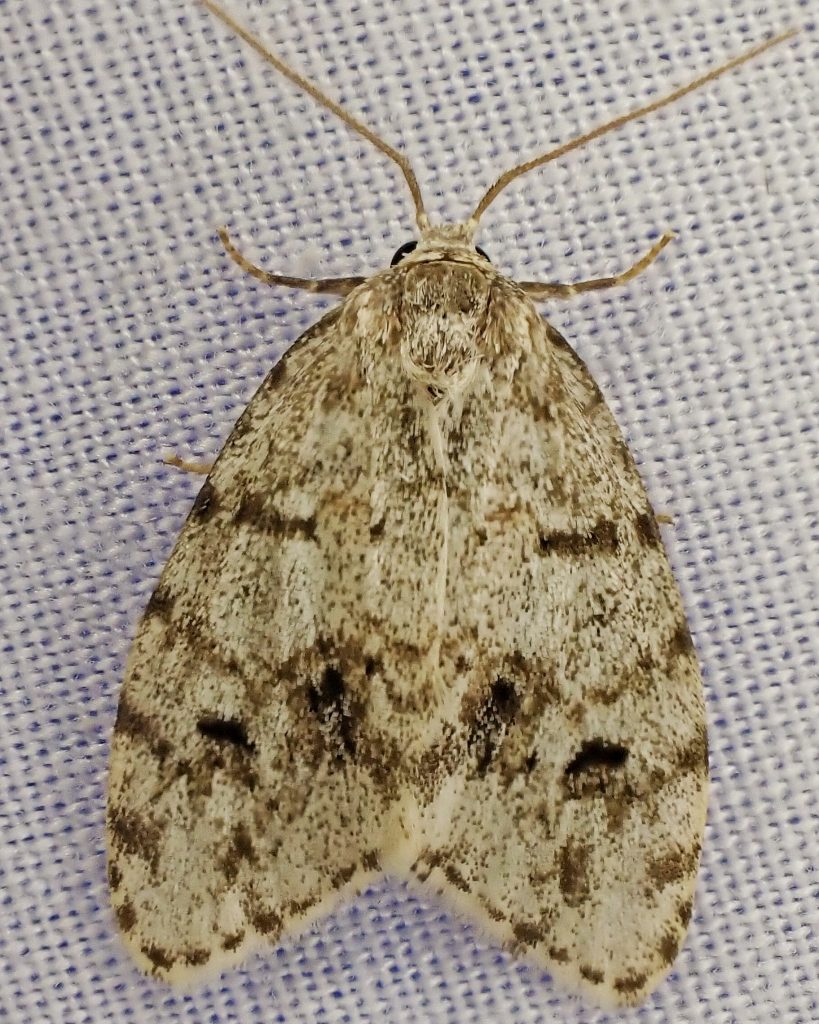
Eats– “This species is a specialist on tree lichens, particularly those that grow on hardwood trees such as Oregon white oak (Quercus garryana). McCabe (1981) reports that the larvae from New York state feed on algae and refuse lichens.” PNW Moths | Clemensia umbrata
Eaten by– Presumably a host for parasitoids in Hymenoptera and Diptera, and probably preyed upon by insectivores of all classes, but I can find nothing specific for this species.
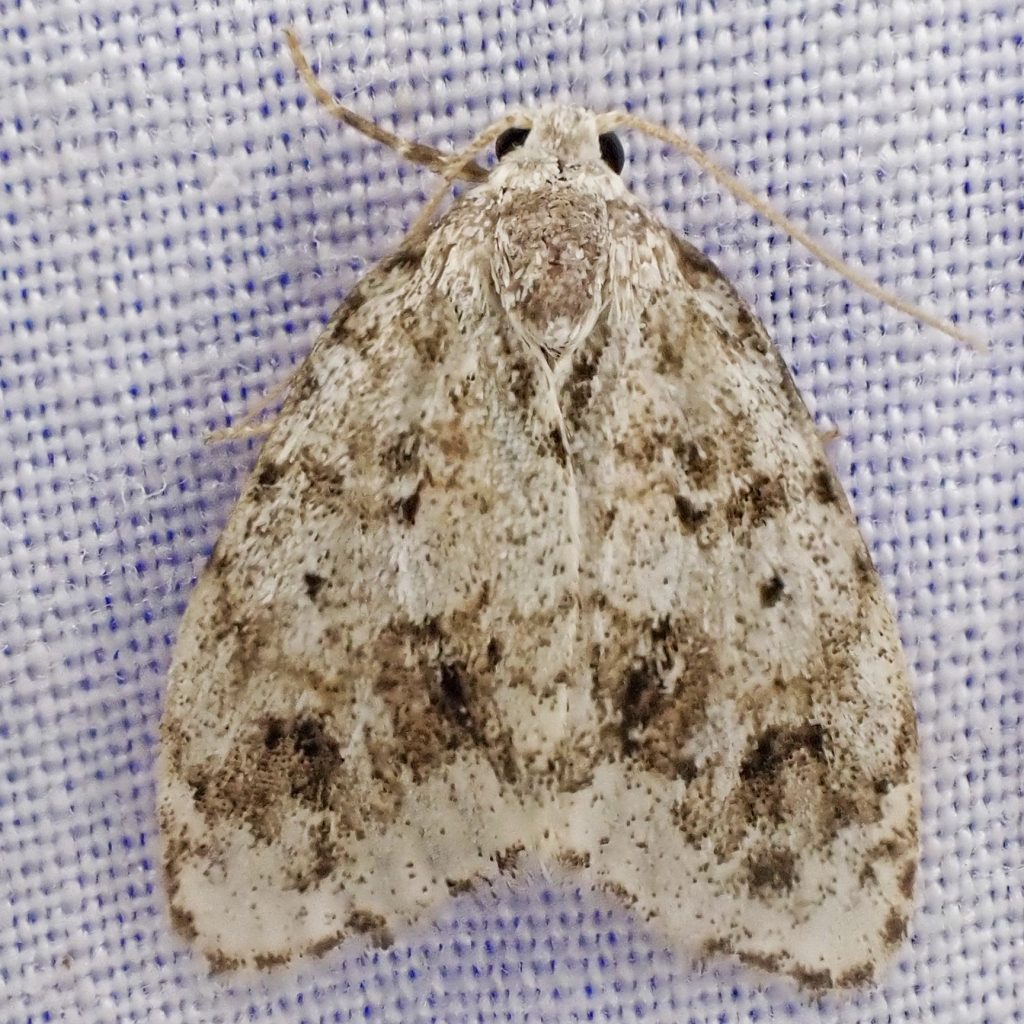
Adults active– “Adults occur in the summer from late June until early September, but are most common in July. They are nocturnal and come to light.” PNW Moths | Clemensia umbrata
Life cycle– Univoltine; overwinters as larvae, probably in the 2nd or 3rd instar.
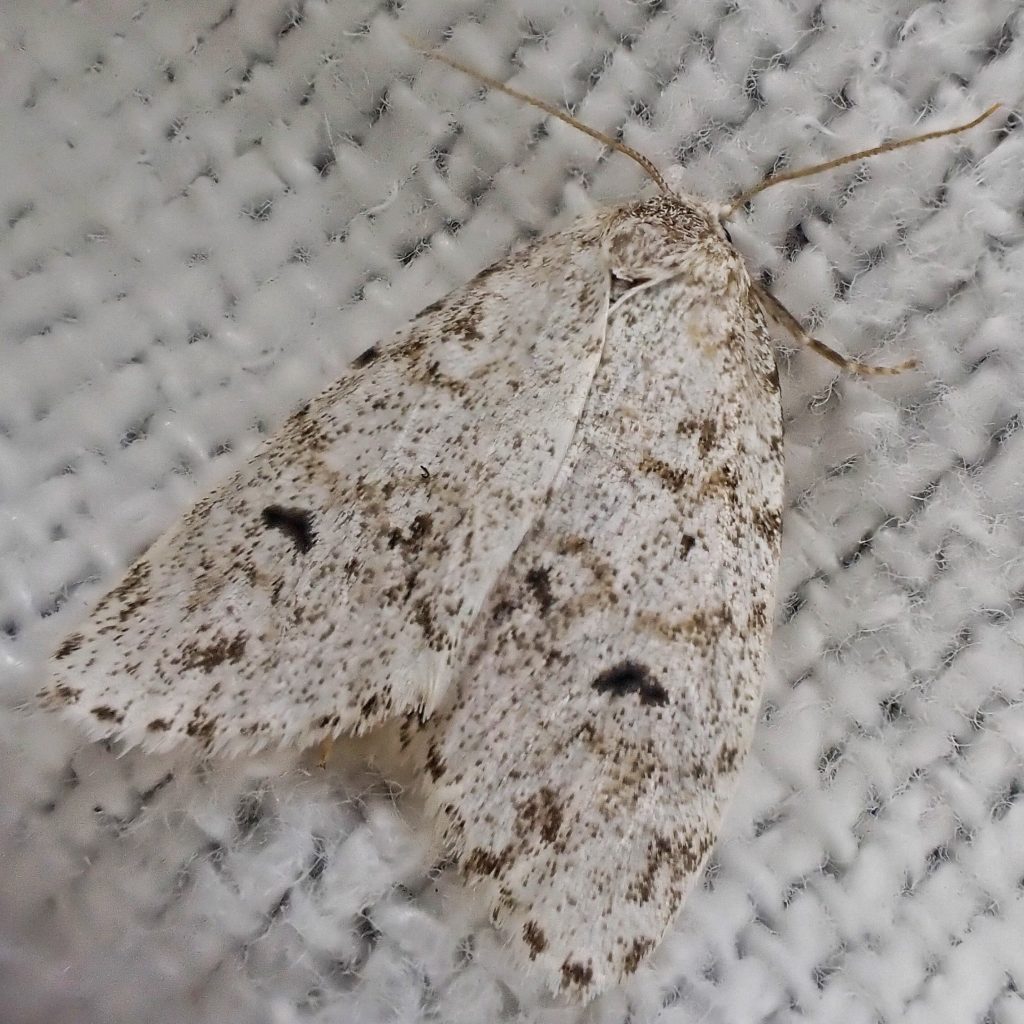
Etymology of names– Clemensia is named in honor of James_Brackenridge_Clemens, (1825-67), an American entomologist who specialized in Lepidoptera. The specific epithet umbrata is from the Latin for ‘shade/shadow’, and though I can’t confirm this I suspect he was saying that it was generally darker than the eastern species Clemensia albata (albata being from the Latin word for ‘white’).
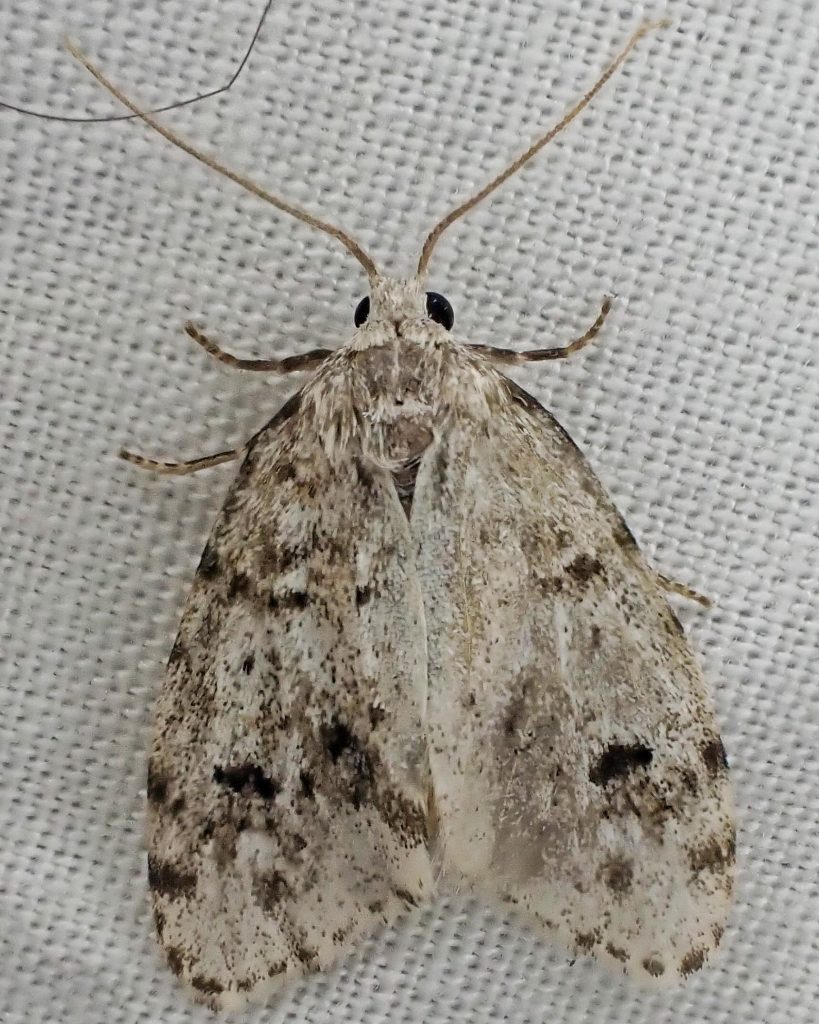
Three species in one: a revision of Clemensia albata Packard (Erebidae, Arctiinae, Lithosiini)
Species Clemensia umbrata – Hodges#8098.2 – BugGuide.
http://mothphotographersgroup.msstate.edu/species.php?hodges=8098.2
